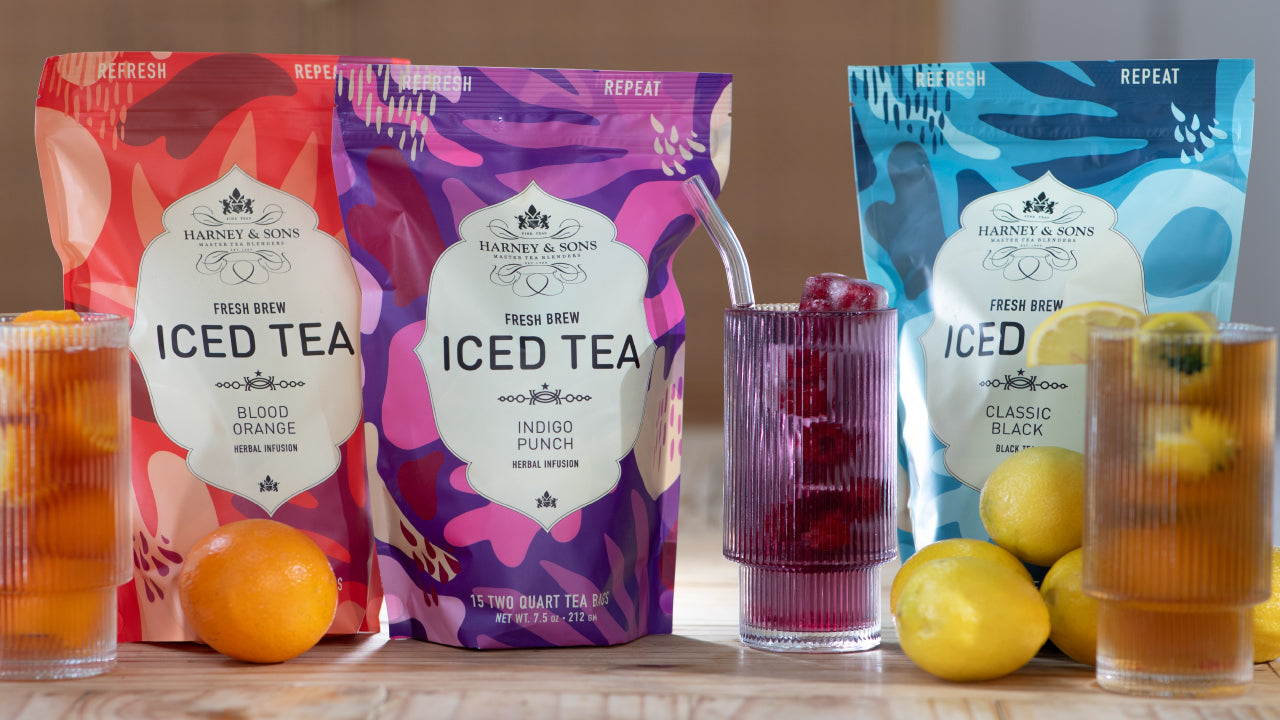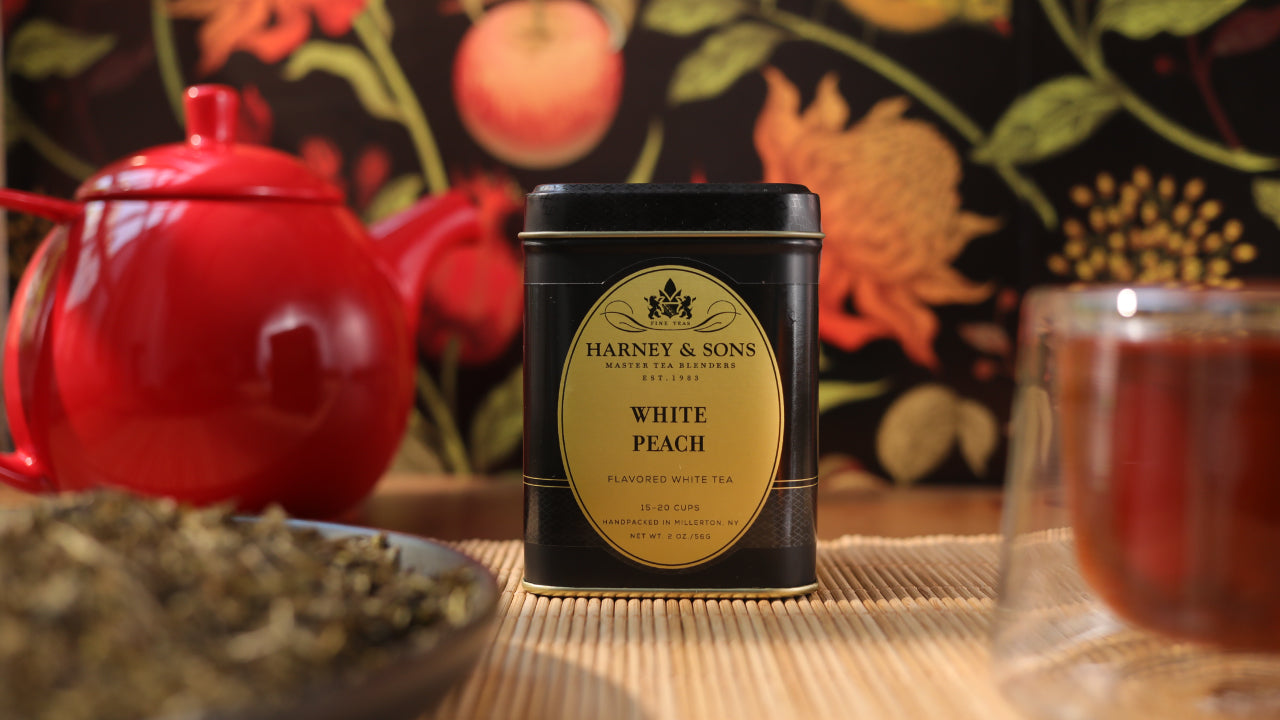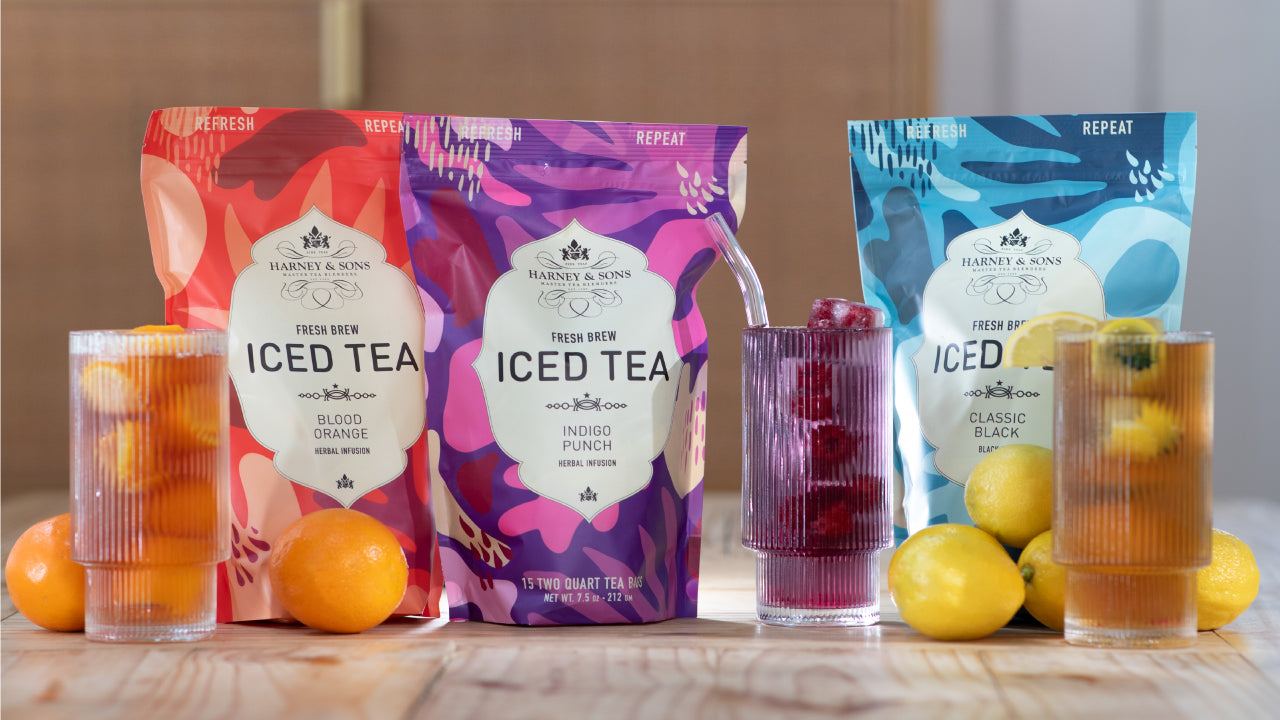Ahhh. What would summer be without a tall glass of refreshing iced tea? If you feel that way, you’re not alone. Did you know that 80-85% of the tea consumed in America is iced tea? It’s basically the official beverage of the South year-round, although down in those parts, it’s always sweet tea y’all!
If you’re wondering about the history of iced tea, we’re spilling the chill tea here! While an Englishman named Richard Blechnyden is credited with inventing iced tea at the 1904 World’s Fair in St. Louis, it seems that iced tea had already been around at least 80 years earlier. In 1823, it is reported that Marguerite Countess of Blessington wrote about sipping iced tea in Naples. There are also old printed recipes for iced tea dating back to the 1870s.
So while iced tea wasn’t Mr. Blechnyden’s original idea, he certainly made it popular during the sweltering St. Louis heat. Richard had a tea pavilion at the World’s Fair to promote Indian black teas. During that time, Chinese green tea was popular in parts of the U.S., but black tea was not as well known. Since the heat wave made few people interested in trying hot black tea, Richard showed textbook sales skills by turning his hot tea into a cold tea that people would want. He bought blocks of ice, made ice chips, and voilà! Since that time, Americans have had a love affair with iced tea in the summer and in the South, pretty much all year long.

Best Ways to Brew Iced Tea
Now that you know the origin of iced tea, learn about a couple of different methods for brewing it.
Method 1: Traditional Brew
You can brew any type of tea and turn it into iced tea. For a single glass, follow the brewing instructions on our Harney tins, using a teaspoon of loose-leaf tea in an infuser, or a single sachet or tea bag, but cut the amount of water in half to create a concentrate. Pour over a glass filled with ice and top off with cold water if needed. As we recommend any time you make tea, use fresh, filtered water. Starting with good, clean water is the first step in making sure your brew is top-notch. Same goes for your ice.
But why make a single glass when you can make a pitcher to store in your refrigerator or share with others? Our Fresh Brew Iced Teas come in pouches large enough to make a two-quart pitcher of tea. Simply steep in hot water, add cold water, refrigerate if you wish, add ice, and enjoy! Get started with our Fresh Brew Iced Tea Sampler Set, which includes Blood Orange, Peach, Tropical Mango, and Indigo Punch. There are several flavors available to mix up your afternoon iced tea time, including flavors like Organic Green With Coconut and Watermelon Mint that practically scream summer.
Once you’ve made your tea, you get to dress it up any way you want. Like sweet tea? Add the sweetener of your choice. Fresh fruit to complement your tea is always a fun addition, so add a slice of lemon or lime, throw in some raspberries or blueberries, fresh mint leaves, maybe a cucumber slice, and a festive tiny umbrella! For more fun tips, see our DIY Iced Tea Bar blog.

Method 2: Cold Brew
Some people prefer cold brewing their iced tea as heat extracts more tannins, which is what can make tea bitter if improperly brewed from letting the tea steep for too long or using water that is too hot. When you brew with cold water, there is no opportunity for extra tannins to sneak into your brew, which results in a smoother, less bitter, and therefore better glass of tea. (A side note that without the heat extraction, the body and flavors may be more muted.) The cold-brew process is nearly 100% error-proof.
This method is also quite simple: add your loose-leaf tea, sachets, or tea bags or our Fresh Brew Iced Tea pouches to room temperature or cold water in a pitcher and steep in the refrigerator for 6-12 hours. If you put loose-leaf tea directly in the pitcher without an infuser, you’ll need to then pour the tea through a fine mesh sieve or a strainer covered in cheesecloth or lined with a paper filter.
If you wish to create a concentrate, just use half the water when you steep. A concentrate can be stored in a smaller container and used to prepare a single serving of iced tea, if you like – just add the water you didn’t use when preparing the concentrate to dilute it to a regular glass or pitcher of tea. Again, remember to use filtered water for best results.
In addition to a smoother sip, another benefit is that cold-brew tea has less caffeine than its hot-brewed counterpart. Again, heat extracts more caffeine from the tea, so when you cold brew the only jitters you are likely to get is if you’re not patient enough to wait a few hours for the tea to steep.
Your pitcher of tea will keep in the refrigerator for several days. To ensure that it stays fresh, make sure your pitcher has a lid or is covered so other sneaky fridge odors don’t contaminate it. Our ForLife Mist Glass Iced Tea 50 oz. Jug or ForLife Mist Glass Iced Tea 68 oz. Jug is the perfect way to prepare and store cold-brew iced tea and has a built-in filter, which makes using loose-leaf tea even easier. For more tips and cold-brew tea recipes, see our Cold Brew Tea blog.

Method 3: Sun Tea (spoiler alert: this is a no)
A staple for many of us growing up -- the big jar with a lid sitting on the back porch table soaking up the summer sun and slowly changing color as the tea steeped -- making sun tea is now highly discouraged even by the CDC.
The reason? Sun tea will not get hotter than 130 degrees Fahrenheit, which is not hot enough to kill bacteria in the water or in the tea leaves. In addition, sun tea often sits around at room temperature for long periods of time, which further gives the bacteria a chance to multiply. Harney & Sons, along with the CDC and the National Tea Association, recommend brewing tea at higher temps that kill any potentially harmful bacteria. Conversely, cold brew, which isn’t prepared at higher temps, is safe because it is made in cold temps that do not promote the growth of bacteria like sun tea does.
So while you perhaps have drunk sun tea and never gotten ill, it’s better not to risk it when there are all these other perfectly safe, convenient ways to make iced tea. Perhaps not as nostalgic, but safer.
Of course, if you don’t have time to brew and need tea that’s ready to sip, we’ve got bottled iced teas! Convenient and delicious, they probably would have sold like hotcakes – or make that ice cream floats – at the 1805 World’s Fair!
However, you choose to brew your iced tea, be sure to enjoy plenty of this summer staple and raise a glass to Richard Blechnyden for helping us all fall in love with it!















